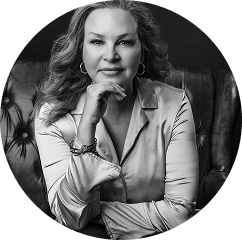
Victoria, BC, is already known for its natural beauty and mild climate—but behind the postcard views, the region is also working hard to reduce its carbon footprint. As British Columbia pushes toward net-zero emissions by 2050, homeowners have an important role to play in making houses more energy-efficient and climate-friendly.From the way we heat our homes to the appliances we choose, every decision affects our personal CO₂ output. The good news is that technology, government programs, and community initiatives are making it easier than ever to live in a home that is both comfortable and low-carbon.
1. Why Energy Efficiency Matters for CO₂ Reduction
The average home in BC produces emissions primarily from:- Space heating (especially when using natural gas or oil)
- Water heating
- Electricity consumption
- Transportation tied to home location and charging needs
2. Current Strategies for Energy-Efficient Homes in Victoria
A. Switch to Clean Heating and Cooling
- Heat pumps (air-source or ground-source) replace fossil-fuel furnaces and can provide both heating and cooling efficiently.
- Cold-climate heat pumps now work effectively even in winter temperatures common to Vancouver Island.
B. Improve Building Envelope
- Upgrade insulation in walls, attics, and crawlspaces.
- Install high-performance windows (triple-pane, low-E coatings).
- Seal air leaks with weatherstripping and caulking to prevent heat loss.
C. Adopt Renewable Energy
- Solar photovoltaic panels for electricity generation.
- Solar hot water systems to reduce demand on electric or gas water heaters.
- Participate in BC Hydro’s net metering program to sell excess energy back to the grid.
D. Smart Energy Management
- Smart thermostats that learn patterns and optimize usage.
- Real-time energy monitoring systems to identify and reduce waste.
3. Everyday CO₂ Reduction Habits
Energy Efficient Home Roadmap – Victoria, BC
Stage 1: Quick Wins (Low Cost, Immediate Impact)
- Switch to LED lighting
- Install low-flow showerheads & faucets
- Use smart power strips to reduce phantom loads
- Run laundry & dishwashers during off-peak hours
- Weatherstrip doors and windows to reduce drafts
Stage 2: Moderate Upgrades (Bigger Savings, Incentives Available)
- Upgrade to ENERGY STAR appliances
- Add attic & wall insulation
- Install high-performance windows
- Seal air leaks in crawlspaces and basements
- Install a smart thermostat
Stage 3: Major Efficiency Investments (Long-Term Payoff)
- Replace furnace with electric heat pump
- Add heat pump water heater
- Install solar panels with BC Hydro net metering
- Prepare home for EV charging station
- Consider solar hot water system
Stage 4: Net-Zero Ready (Clean Energy Leadership)
- Combine renewable generation + battery storage
- Electrify all appliances (induction cooktop, electric dryer)
- Integrate building-integrated solar glass/roofing
- Use carbon-storing construction materials for renos
- Connect to community district energy systems (where available)
Extra Tip for Victoria
- Take advantage of CleanBC Better Homes and Canada Greener Homes incentives.
- Use a Certified Energy Advisor to map out your personal retrofit plan.
4. Future Plans and Projects for Victoria
A. Step Code and Zero Carbon Step Code
- BC’s Energy Step Code is being adopted in stages by municipalities, including Victoria, requiring new buildings to meet increasingly higher energy performance standards.
- The Zero Carbon Step Code, coming into force over the next decade, focuses on reducing or eliminating operational greenhouse gas emissions.
B. Deep Energy Retrofits
- Programs are being developed for large-scale retrofits of older homes, targeting 40–60% reductions in energy usethrough insulation upgrades, window replacement, and heating system conversions.
C. District Energy Systems
- Potential for neighbourhood-scale renewable heating using waste heat recovery, biomass, or geothermal networks.
- Downtown Victoria and certain developments are exploring shared energy solutions to reduce per-home emissions.
D. Electrification of Everything
- Province-wide move toward electric space and water heating, induction cooking, and EV-ready homes.
- Coupled with BC Hydro’s renewable electricity grid, full electrification drastically lowers household CO₂.
5. Products and Technologies on the Horizon
- Next-generation heat pumps with higher efficiency and refrigerants with ultra-low global warming potential.
- Building-integrated photovoltaics (BIPV), where windows and exterior surfaces generate electricity.
- Smart microgrids in residential communities, enabling energy sharing and storage.
- Carbon-storing building materials, such as hempcrete, mass timber with bio-based insulation, and carbon-cured concrete.
6. Planning Your Own Path to a Low-Carbon Home
- Audit your home’s energy use through a certified energy advisor.
- Set priorities: start with insulation and air sealing, then move to heating and renewable energy systems.
- Apply for incentives from programs like:
- CleanBC Better Homes
- Canada Greener Homes Grant
- Think long-term: plan for future electrification, solar readiness, and EV charging capacity.
7. The Big Picture
Victoria’s future depends on making homes part of the climate solution. By improving efficiency, switching to clean energy, and adopting low-carbon habits, we can significantly reduce CO₂ emissions while enjoying more comfortable, healthier living spaces.The technology is here. The policies are being put in place. The next step is ours—planning and building for a future where our homes help protect the very environment we love.Disclaimer:
The information provided in these posts are for general purposes only. It is not written nor intended to provide legal advice or opinions of any kind. No one should act upon, refrain from acting, based solely upon the materials provided & recorded, or through any hypertext links and other general information, without first seeking appropriate legal and/or other professional advice.

